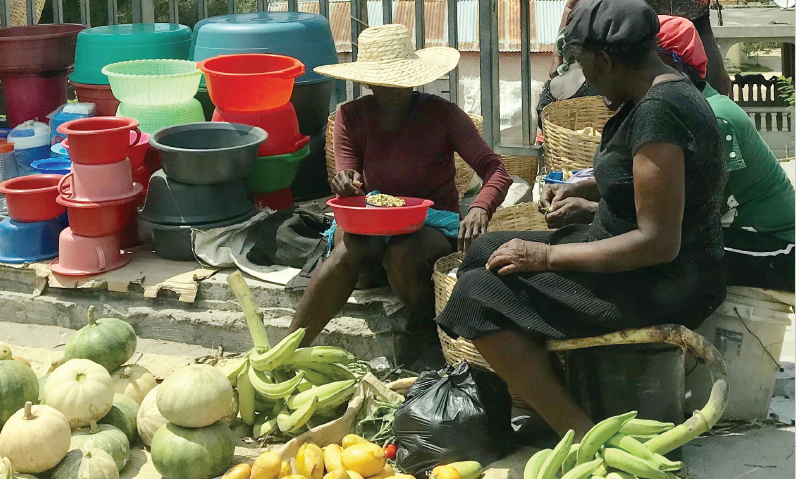
Apr 30, 2019
Haitian garment workers face increasing difficulty in covering basic expenditures as prices soar while wages hover far below the cost of living, according to a new Solidarity Center report.
The High Cost of Low Wages in Haiti (2019), a new Solidarity Center survey tracking living expenses for garment workers from September 2018 through March 2019, shows that the daily minimum wage of 420 gourdes (about $5.07) for export apparel workers in Haiti is more than four times less than the estimated cost of living. Consequently, workers—the majority of whom are women supporting families—are forced to toil longer for less due to diminished purchasing power and are unable to cover daily necessities, including food.
Report recommendations include that government increase the minimum wage to an estimated living wage of 1,750 gourdes per day and allow workers to select their own representatives to the country’s tripartite minimum wage committee.
“Any substantive discussion on democracy in Haiti needs to address the issue of a living wage for Haitian workers,” said Joell Molina, Solidarity Center regional program director for the Americas. “When workers earn enough to meet their basic needs, they can stop focusing on daily survival and shift their energy toward participating in civic spaces to better their communities and enhance their democracy.”
Even though Haiti has incrementally increased the minimum wage since the passage of HOPE II—U.S. legislation qualifying exports for duty-free access to the U.S. market in exchange for factory adherence to international labor standards and domestic labor law, among other criteria—wages have not kept pace with inflation.
The cost of living in Haiti has increased by 74 percent since the Solidarity Center’s last assessment in 2014. Based on the current minimum wage, workers must spend more than half (55 percent) of their take-home pay on work-related transportation and a modest lunch, leaving insufficient funds to cover other necessities. Some workers say they can only afford to eat once per day.
A follow-up to similar cost-of-living surveys conducted in Haiti in 2011 and 2014, The High Cost of Low Wages in Haiti presents pricing data collected across communities in which garment workers are concentrated, including Delmas, La Plaine, Petionville, Tabarre, downtown Port-au-Prince and the airport zone near the Metropolitan Industrial Park. The locally appropriate basket of goods surveyed includes clothing, communication, education, energy, food, healthcare, housing, transportation, water, and savings and discretionary spending.
The apparel industry represents one of the few sources of formal employment in Haiti and provides factory jobs to as many as 52,000 workers. Despite the requirements of HOPE II, the independent monitoring program Better Work Haiti routinely reports rights abuses, including improper payment of wages and benefits, health and safety violations, sexual harassment and repression of freedom of association. In addition to poor working conditions, many workers labor with persistent hunger due to their inability to afford enough food.
Workers in Haiti face daunting obstacles when seeking to exercise their rights to better wages and working conditions. In the 2018 ITUC Global Rights Index, which ranks 142 countries according to 97 internationally recognized indicators to assess the extent to which worker rights are protected in law and in practice, Haiti was found to systematically violate worker rights.
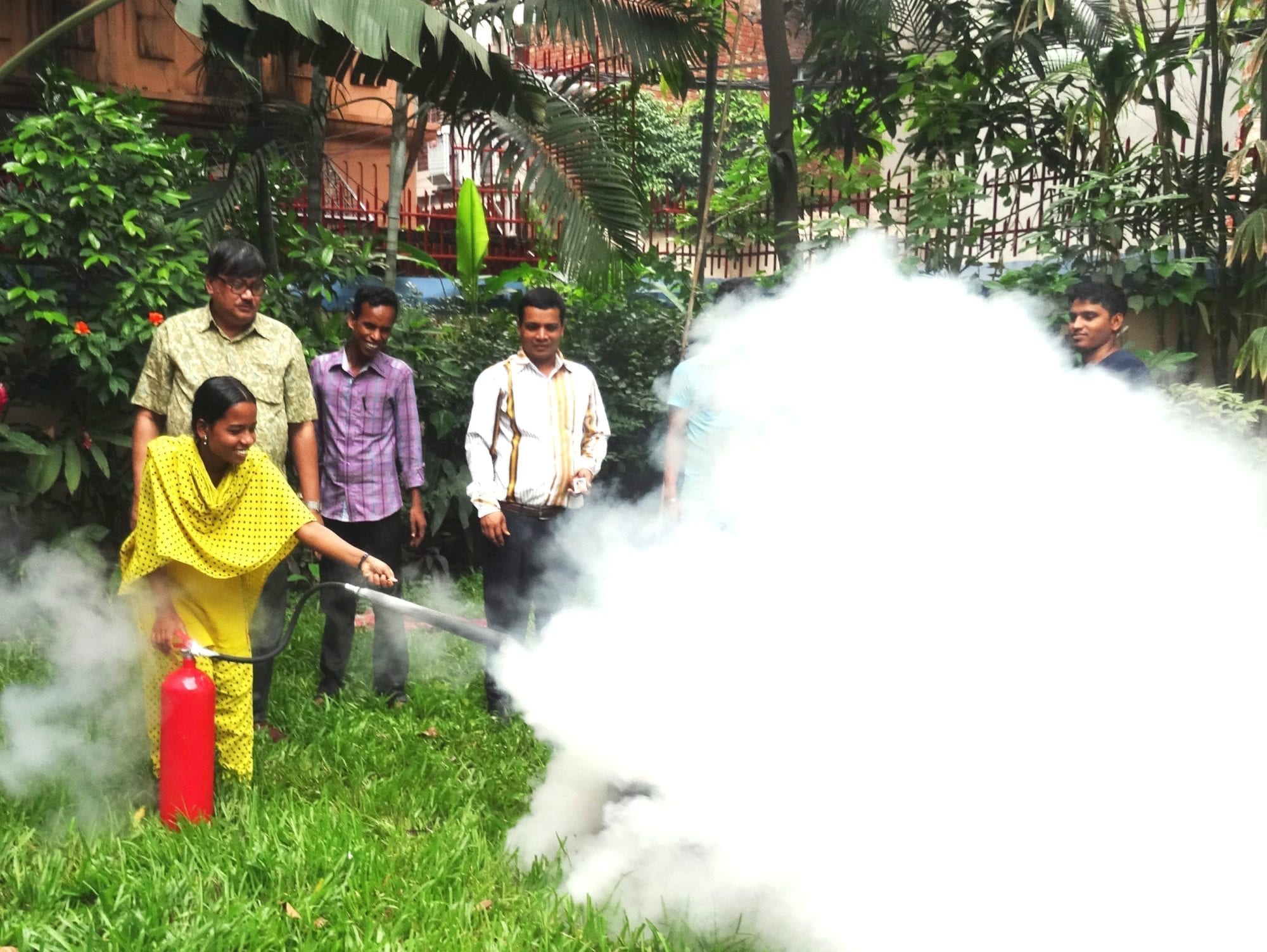
Apr 23, 2019
Six years ago, the preventable Rana Plaza collapse in Bangladesh killed 1,134 garment workers in the world’s worst garment industry disaster. Corporate greed, inadequate labor and building code enforcement, and worker exploitation all contributed to the April 24, 2013, tragedy, which spurred efforts to improve factory safety and support workers seeking a voice on the job.
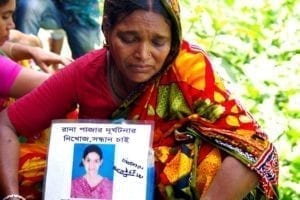
Nurunnahar mourns the loss of her daughter who died in the Rana Plaza collapse. Credit: Solidarity Center/Balmi Chisim
Many survivors still face unemployment and poverty because they are too injured to work, according to an Action Aid survey. Months before Rana Plaza collapsed, a fire at Tazreen Fashions factory killed more than 112 workers, part of a pattern of dangerous conditions and deadly risks garments workers face each day in Bangladesh.
Following Rana Plaza, Bangladesh has seen important international and domestic efforts to address fire and building structure risks and improve the labor conditions that hinder workers from reporting dangerous working conditions and violations, and exercising their labor rights. Initiatives like the Bangladesh Accord for Fire and Building Safety, a binding agreement involving fashion brands, unions and the government that helped make many garment factories safer, fueled a rise in union organizing.
And through worker education, like the Solidarity Center’s Fire and Building Safety program, garment workers are boosting their capacity to identify safety and health problems at the workplace and learn about their right to join together to ensure safe workplaces by taking collective action to resolve problems.
6,000 Garment Workers in Solidarity Center Fire Safety Trainings
More than 6,000 Bangladesh garment workers have participated in Solidarity Center safety programs in recent years, including Shilpi Akter, who has worked in the garment industry for more than 10 years.
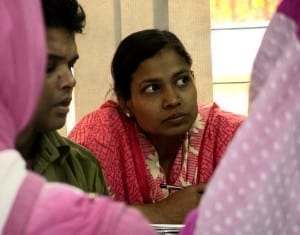
Some 6,000 Bangladesh garment workers have taken part in Solidarity Center fire safety trainings. Credit: Solidarity Center/Balmi Chisim
“Before the Rana Plaza incident, there were no sprinklers, fire doors or emergency lights in our factory,” she says. “I had no idea what fire or health and safety at work meant, neither did we have any trade unions or safety committees.
“Through Solidarity Center’s fire safety training, I learned how to use a fire extinguisher, how to be safe from the fumes during a fire accident, and that I must not keep the clothes I stitch near the heated motor of the machine. This knowledge was unknown to me even a few years back.”
Bilkis Begum, a garment worker and a union president, says before Rana Plaza, “we handled the toxic chemicals without any precaution and had no idea on what to do in case of a fire accident except to run.”
Mohammed Ronju paints the incident more starkly. “There would be no Rana Plaza if it had a union,”’ says Ronju, who has worked in the garment industry for 15 years. If workers had a union, they “would not go inside the building when they sensed trouble. They would have strongly resisted the pressure from management to go inside a building about to collapse.” The day before the Rana Plaza disaster, building engineers declared the structure unsafe. Yet managers threatened to withhold wages if workers did not show up for work the day Rana Plaza collapsed.
‘No More Rana Plazas’
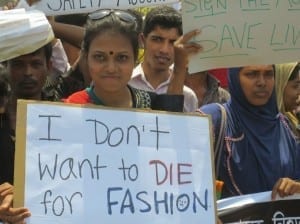
Each year, tens of thousands of Bangladesh workers rally on the anniversary of the Rana Plaza disaster to demand safe working conditions. Photo: Solidarity Center/Sifat Sharmin Amita
The Rana Plaza tragedy prompted international efforts, through the Accord and other mechanisms, to ensure dangerous garment factories were closed or repaired and safety measures instituted. As a result, factory compliance with fire and building safety codes has improved. Yet much more work remains to be done to ensure full compliance with basic fire and building safety and occupational health standards, and to guarantee enforcement of fundamental labor laws, including workers’ right to form unions.
Since November 2012, at least 1,304 Bangladesh garment workers have been killed and at least 3,877 injured in factory fires and other workplace incidents, according to data compiled by the Solidarity Center.
All the more reason, experts say, the Bangladesh government must not roll back international safety inspections.
Says Bilkis Begum: “Surely, we all would agree that it should never be the case that we could sacrifice another Rana Plaza to complete the remaining task of making the workplace safe for the garment workers of Bangladesh.”

Apr 22, 2019
The Solidarity Center is sickened and saddened by the senseless bombings that killed and injured hundreds of people Easter Sunday in Sri Lanka. The organization, which works throughout the country and the world with workers across ethnic and religious lines, deplores the use of violence and offers its deepest condolences to the victims’ families and friends, and to the Sri Lankan people.
Solidarity Center staff and families in country are accounted for and safe, as are those of its partners.
“The mass murder of workers and people going about their day is despicable,” says Alonzo Suson, Solidarity Center Sri Lanka country program director.
Tim Ryan, Solidarity Center Asia regional program director, served as Sri Lanka program director in the 1990s and has a longstanding appreciation for the island and its people:
“Our organization stands in solidarity with the people of Sri Lanka in this difficult time,” he says. “And we all hope for the speedy recovery of the more than 500 people who were injured.”
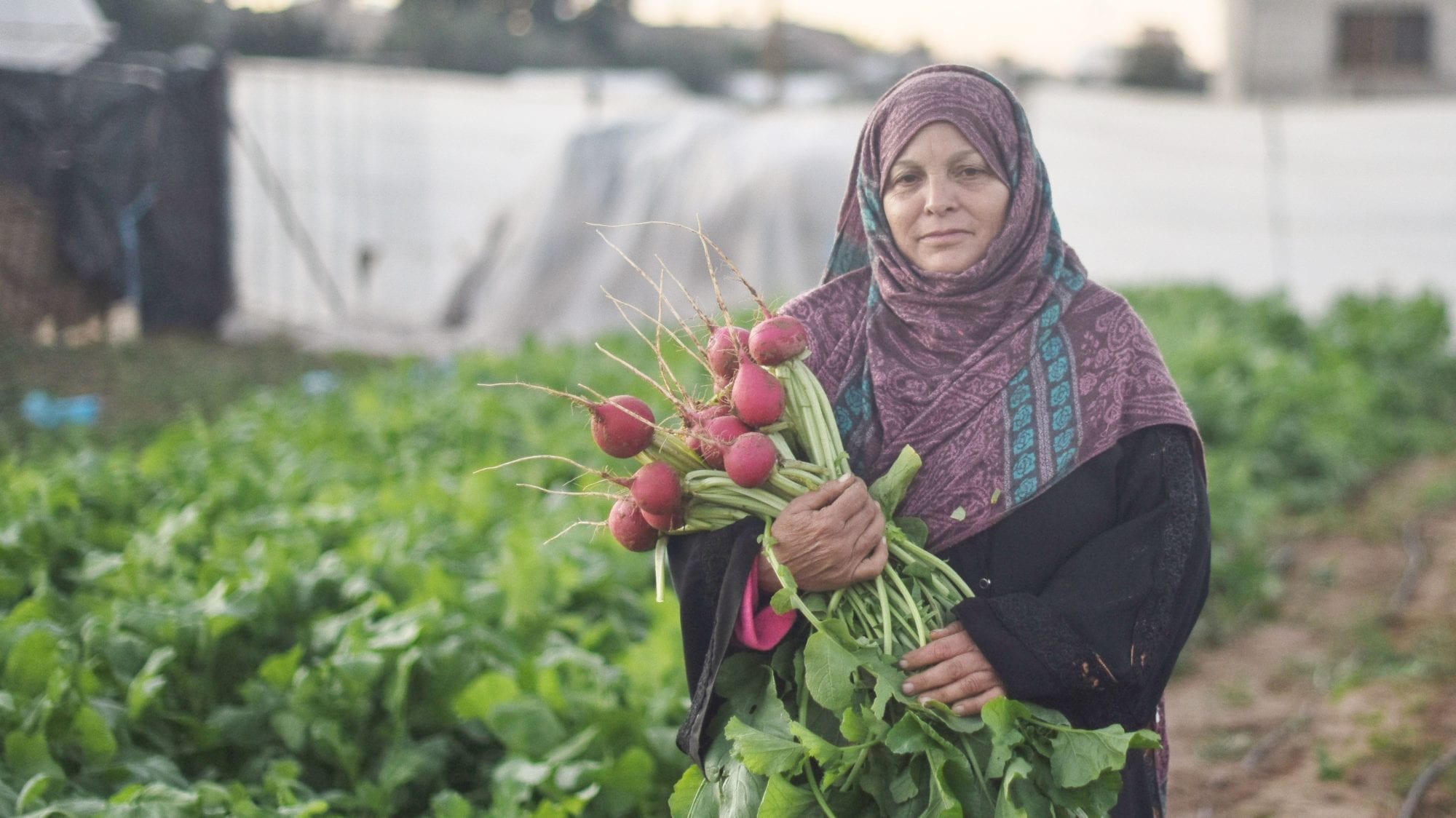
Apr 17, 2019
While all work has value, not every job is a “good job.” Millions of workers around the world, especially those in the informal sector, cannot enjoy the benefits of their own hard work and often are denied safe working conditions, social protections like health insurance, professional security and union rights and freedom.
The Solidarity Center partners with unions and other allies to support workers seeking to achieve decent work and dignity on the job, together. In Palestine, the Solidarity Center supports activists fighting for labor law enforcement and sustainable jobs, to improve the lives of all working people.
A new Solidarity Center photo essay, ’Sometimes I Am Lucky to Get A Task for Three Days’: Etaf Awdi Hamdi Eqdeeh, offers a look into the life of a mother and agricultural worker Etaf Awdi Hamdi Eqdeeh who lives and works in Khuza’a, near Khan Younis, Gaza.
Now in her 60s, Etaf visits area farms daily to look for any kind of temporary job because she cannot find a permanent job—and she helps support her multigenerational family.
“Sometimes I am lucky to get a task for three days,” she says.
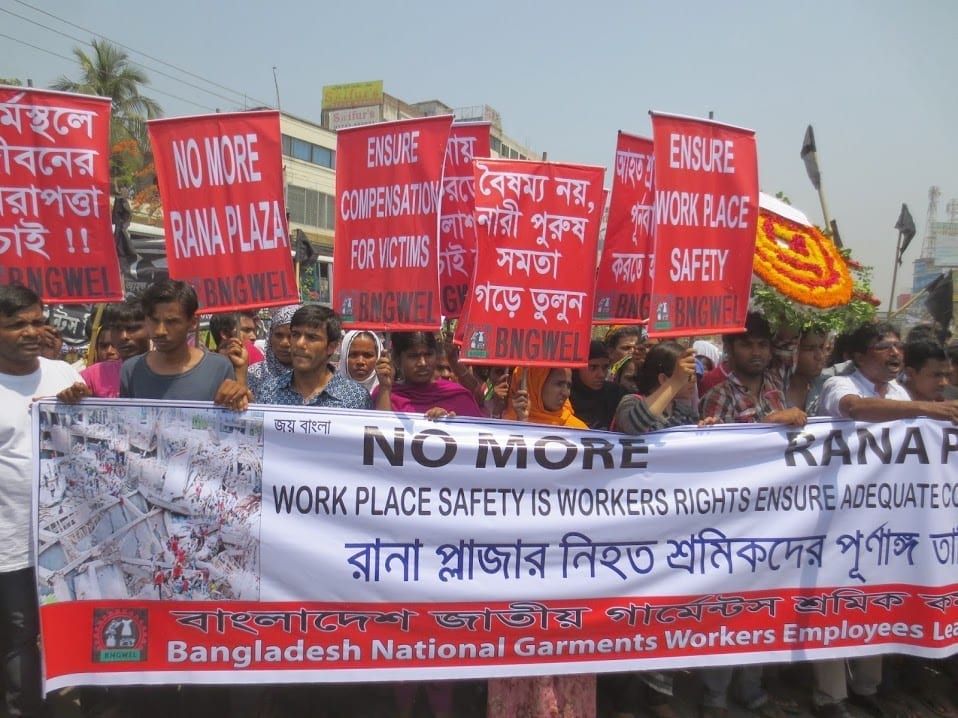
Apr 17, 2019
On a recent Friday, the only day off for Bangladesh garment workers—if they get a day off—I went to visit workers at their homes to better understand how the people who stitch our clothes live their lives. Walking through the puzzling narrow alleys, I entered a tin shed-like building. A corridor tore through the center and on each side were rooms for families. It was in one of these dimly lit rooms where I met Konika, who worked as a sewing operator in a nearby garment factory in Gazipur. In the tiny space where she lived with two children and her husband, she revealed the conditions at her workplace.
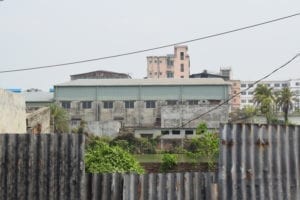
A garment factory in Gazipur. Credit: Solidarity Center/Istiak Ahmed Inam
“We are under intense pressure to meet the target production,” she says. “I used to produce 70 pieces an hour but now, after our minimum wage has been increased by the government, I must produce 90 pieces. I have to think twice if I want to use the washroom. What if I miss my deadline? What if my production manager sees me? I rest only if there’s a problem with my machine and am lucky if the mechanic is not close by.”
Worker Safety under Threat Again
Six years after the deadly April 24, 2013, Rana Plaza building collapse killed 1,134 garment workers and injured hundreds more, the government is on the verge of rolling back international safety inspections even as employers and the government are blocking workers’ ability to exercise their right to form unions to improve working conditions.
Disasters like Rana Plaza or the 2012 Tazreen Fashions fire, which together killed more than 112 garment workers, prompted global outrage and mobilized workers in protest of unsafe and deadly working conditions, forcing major fashion brands and Bangladesh suppliers to address safety issues. As a result, unions, suppliers and many international brands formed the Bangladesh Accord on Fire and Building Safety, a binding agreement that helped make many garment factories safer. Despite its success, however, the accord may be dismantled, leaving workers at the mercy of a system unprepared to improve factory safety, according to a recent report.
Meanwhile, fashion companies often send their own inspection teams to factories, but the effectiveness of these visits is debatable.
“Our managers make us tell the foreigners [safety inspectors] we don’t work until 10 p.m., that we receive our wages regularly and we even receive our doctor’s fees. None of this is true,” says Konika. On many occasions, the inspection team strolls around the factory, only gathering data from factory management and not from the workers, thus releasing inaccurate reports.
Konika and her co-workers face odds that would dishearten many: factory owners escalating pressure to produce and depriving workers of their basic rights, and corporations wearing a mask of “doing all they can” for workers, while in fact, doing nothing.
Yet Konika, on her day off, enjoys time with her family, despite recognizing the injustices she is likely to face tomorrow.









